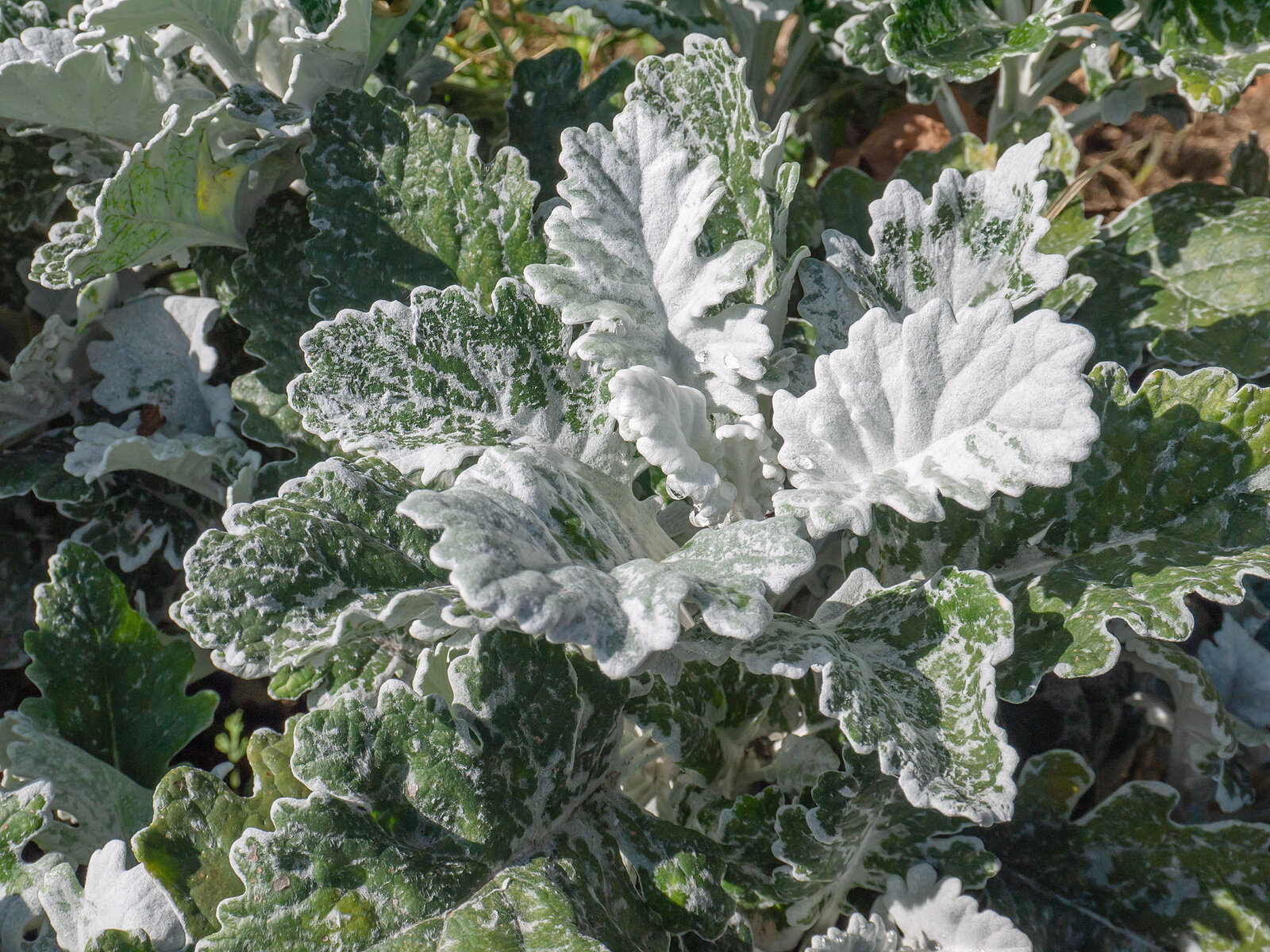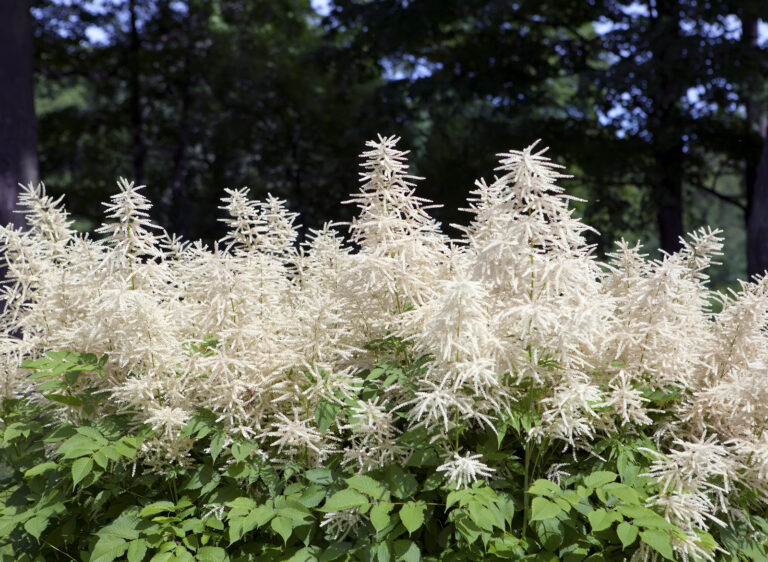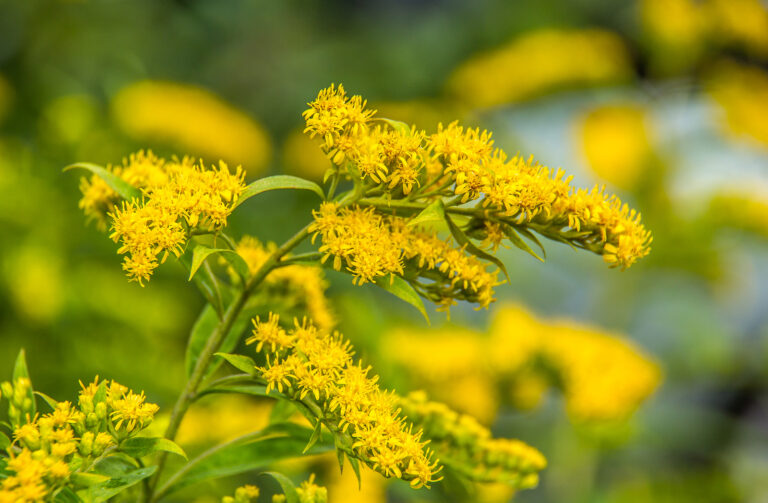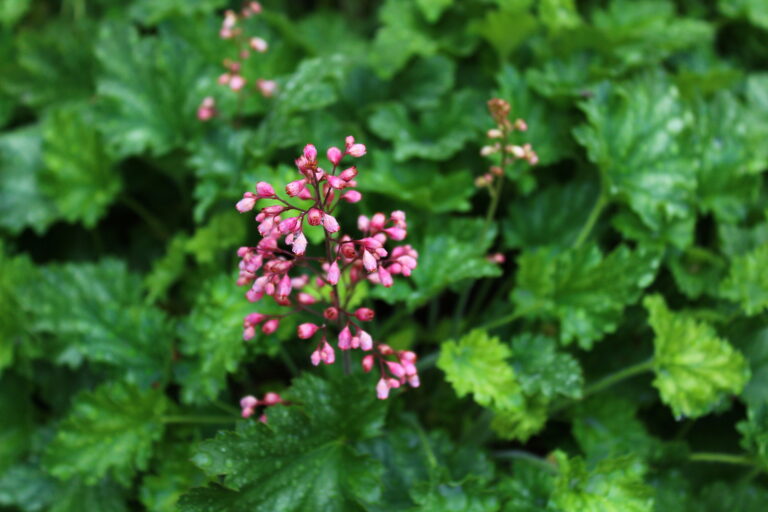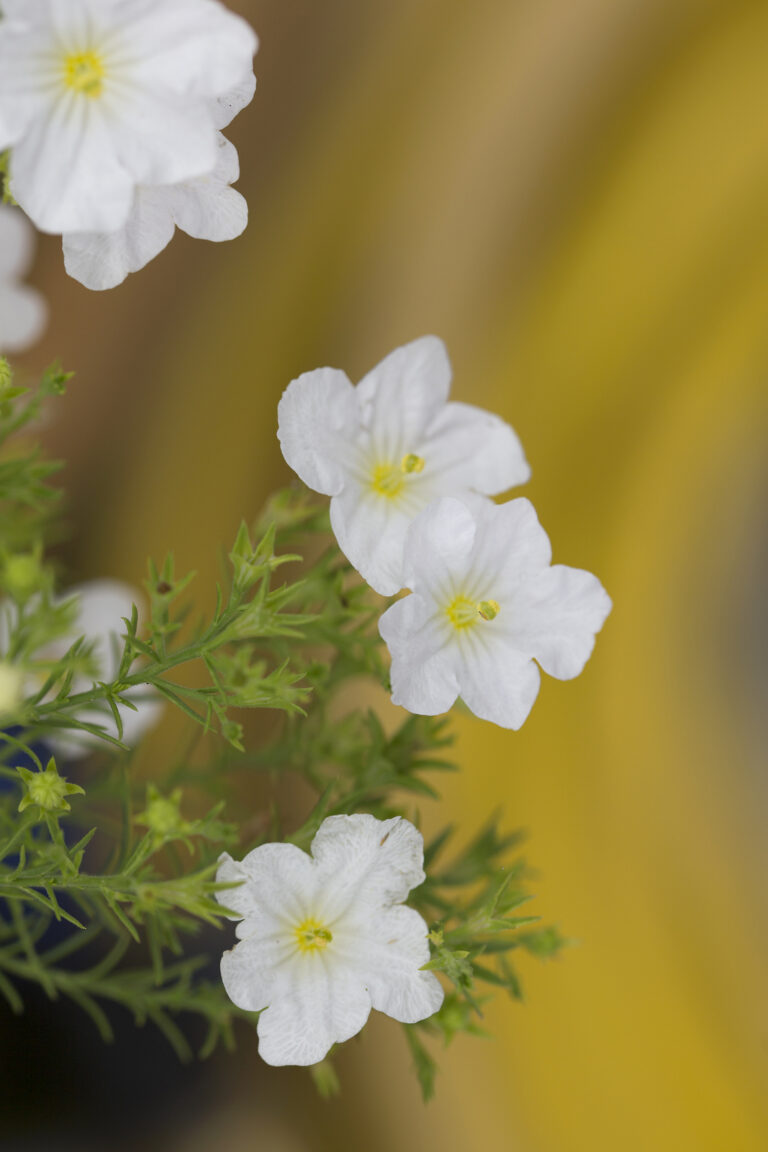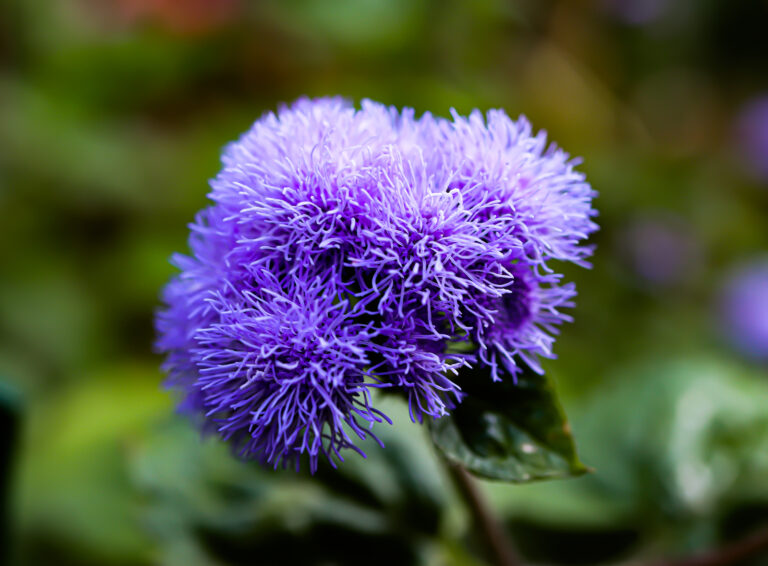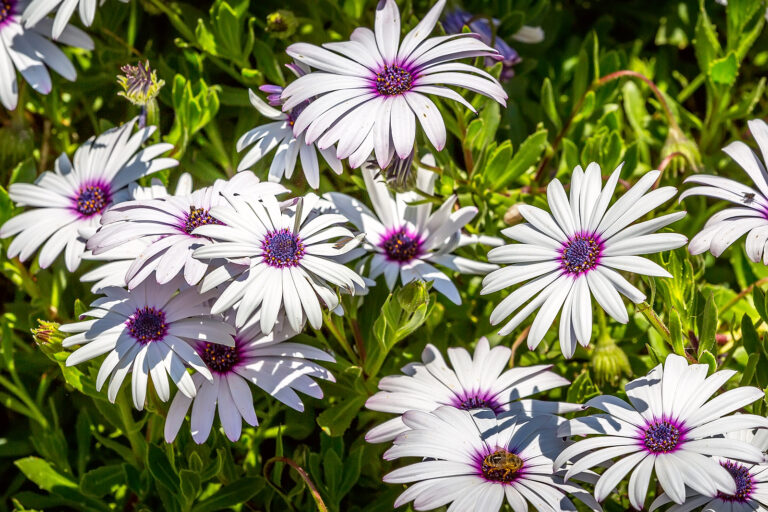How to Grow Dusty Miller — Senecio
Senecio is a large genus of bedding plants, tender perennials, and houseplants that all bear daisy-like flowers. The flowers usually appear in clusters but sometimes appear singly. In most species, the eyes are surrounded by ray florets or petals.
The two best-known members of the Senecio genus are Dusty Miller, Senecio cineraria, and Florist’s Cineraria, Senecio x hybridus. Taxonomists have recently reclassified Senecio x hybridus; the Florist’s Cineraria is now Pericallis x hybrida.
The foliage of Senecio members is diverse. Leaf shapes include rounded, deeply cut, and fernlike. Foliage can be fleshy or succulent, and several species bear hairy to wooly white leaves.
There are more than 1,000 species in the Senecio genus. Most are perennials, some are succulent, and some are evergreen or deciduous vines. Among the hundreds of species are many yellow-flowered weeds.
The genus is widely distributed across all continents except Antarctica.
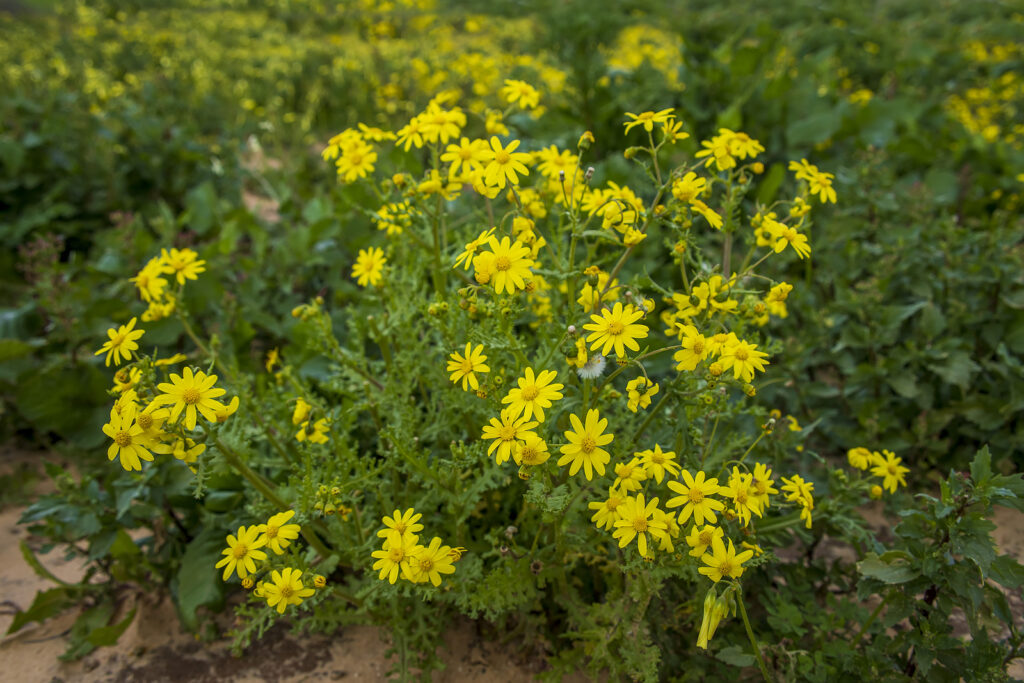
Get to know Senecio
- Plant type: Perennials and some vines
- Growing zones and range: Zones 8 to 10
- Hardiness: Tender to very hardy depending on the species; perennials are hardy to 10°F (-12°C).
- Height and width: Most species grow 18 to 24 inches (45-61cm) tall and wide; vining species can grow to 6 feet (1.8m) tall.
- Foliage: Basal leaves are enire or lobed, sometimes white or silver
- Flowers: Daisy-like flowers usually bright yellow but sometimes purple or white
- Bloom time: Summer
- Uses: Edging plant, vining plant depending on species
- Common name: Varies with the species
- Botanical name: Senecio
- Family name: Asteraceae
- Origin: Found worldwide in habitats ranging from mountains to seashores, dry to moist soils
Where to plant Senecio
- Grow Senecio in full sun to light shade depending on the species.
- Plant Senecio in average to humus-rich, well-drained soil.
Senecio uses and companions
- Use annual Senecio as bedding plants or in containers.
- Grow tall perennial Senecio in a border or wild garden; grow small perennials in a rock garden.
- Good garden companions for Senecio include Agapanthus, Belamcanda chinensis, Gaura lindheimeri, Gazania, Gerbera jamesonii, Sedum, Sisyrinchium striatum, Verbena.
When to plant Senecio
- Sow seeds indoors 6 to 8 weeks before the last spring frost. Keep seeds at 65° to 70°F (18-21°C) until seeds germinate.
- Sow seeds outdoors at least two weeks after the last frost in spring.
- In Zone 9 and warmer, seeds can be sown in autumn.
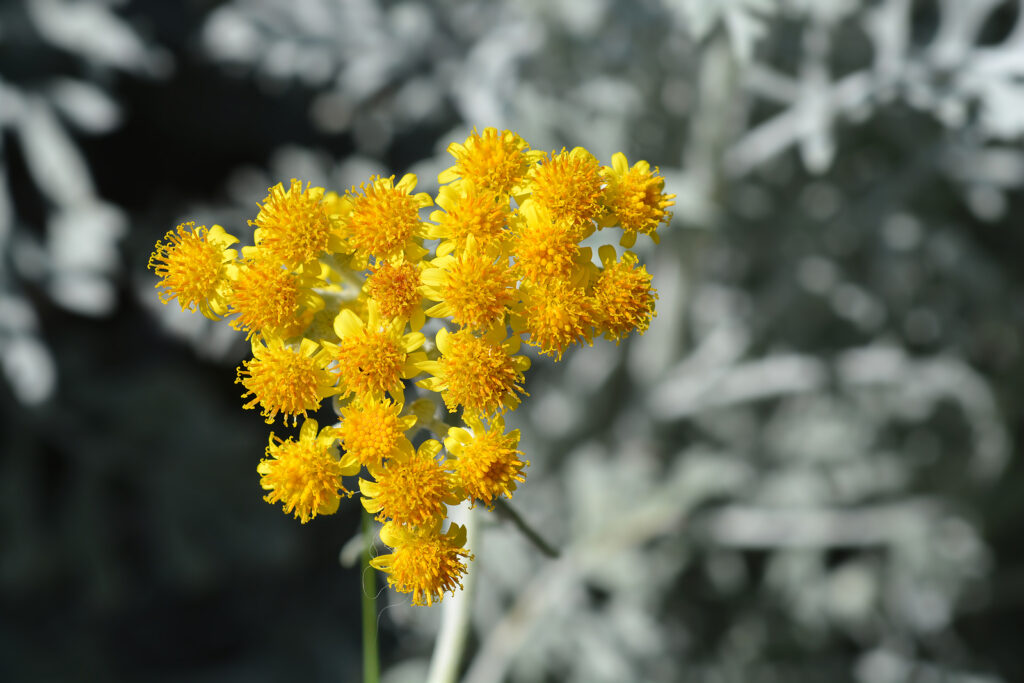
Planting and spacing Senecio
- Indoors sow seeds 1/8 inch deep in a sterile seed-starting mix. Press the seeds into the soil; do not bury the seeds. Light is required for germination. Damping-off is a common problem. Water from below keeping the mix moist but not damp and never dry.
- Sow seed outdoors in evenly prepared soil.
How to water and feed Senecio
- Keep the soil evenly moist, not wet, or dry.
- Fertilize Senecio with an all-purpose fertilizer at planting time or fertilizer perennial species in spring when new growth begins.
Senecio care
- Trim perennials each spring to maintain their shape.
- Give vining types a trellis to climb or let them cascade over walls or out of hanging baskets.
Growing Senecio as a houseplant
- Senecio macroglossus (rubber ivy), S. mikanioides (German ivy), and S. rowleyanus (string-of-beads) are often grown as houseplants, also S. x hybridus, commonly called cineraria.
- All do well in average temperature and medium humidity and are suitable for growing in hanging baskets.
- The soil for rubber ivy and string-of-beads should be kept relatively dry. The soil for German ivy should be kept evenly moist.
- Stem tips should be pinched back often to encourage bushy growth.
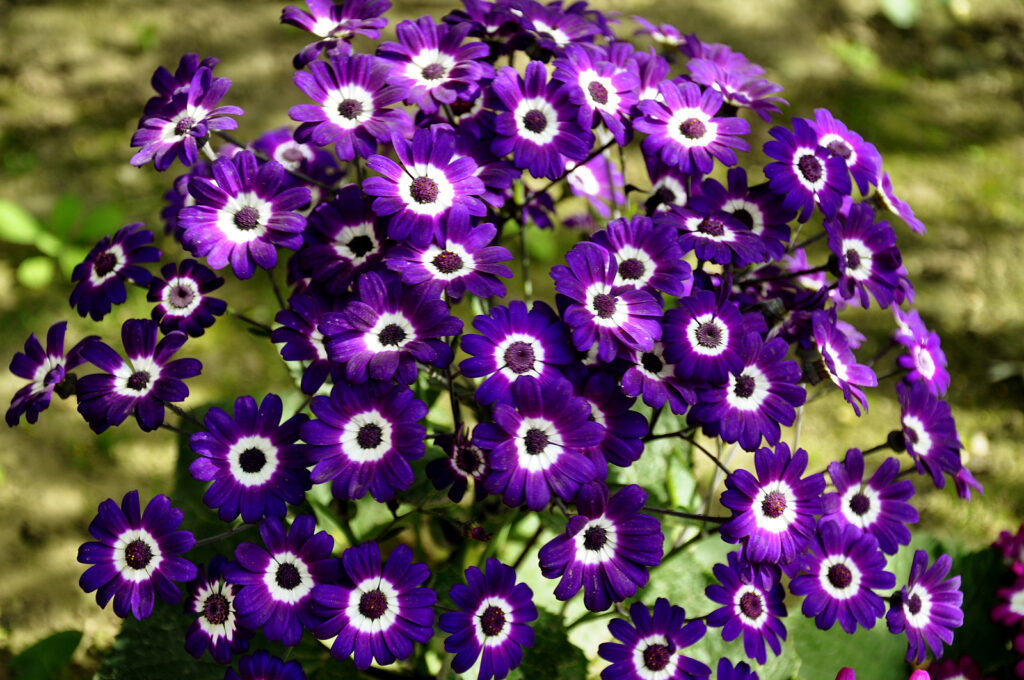
Growing Senecio x hybridus, Cineraria, as a houseplant
- Place cineraria in a cool room where light is bright and humidity high.
- Cinerarias like it cool; they will bloom for a much longer period with daytime temperatures of 65° (18°C) and 50°-55° (10°-13°C) at night.
- Grow in a well-drained, soilless medium–a peat moss based potting soil is best– and keep it evenly moist.
- Do not allow the soil to dry out, but be careful not to over water.
- Fertilizing is not necessary.
- Once they begin to bloom they prefer to be kept somewhat root-bound.
- After the plant has flowered, it will deteriorate and can be discarded unless you live in a warm-winter region (Zones 9-11); there you can set them out in the garden where they may (or may not) thrive.
Senecio pests and diseases
- Young plants are susceptible to damping off. Use a sterile seed-starting or potting mix and water from below.
- Slugs and snails can attack Senecio.
- Indoors aphids, mealybugs, spider mites, and whiteflies can attack Senecio.
- Botrytis blight and root and stem rot can occur.
Senecio propagation
- Sow seeds in late winter or early spring.
- Senecio seeds germinate in 10 to 15 days at 60° to 70°F (16°-21°C).
- Perennial species can be propagated by seed or cuttings.
- Take cuttings in late summer and root them in a seed-starting mix after dipping the tips in rooting hormone. Root cuttings in a greenhouse or under protection.
- Herbaceous perennials can be divided in spring.
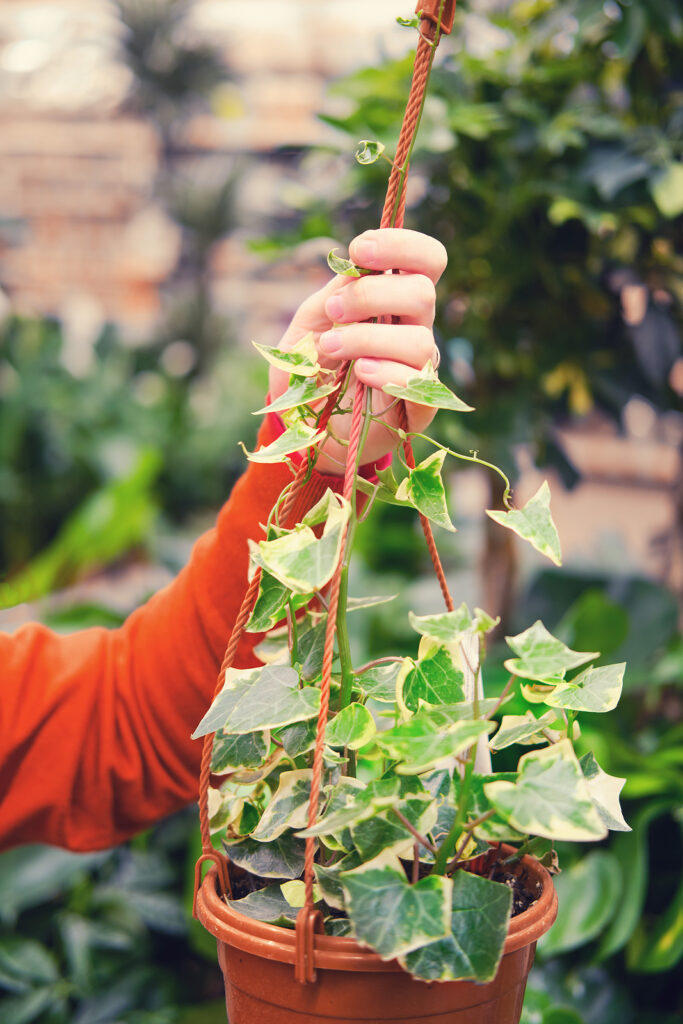
Senecio varieties to grow
- Senecio cineraria, Dusty Miller: shrubby perennials grow 24 to 36 inches (61-91cm) tall and wide with woolly white leaves cut into blunt-tipped lobes; bears clustered heads of yellow creamy yellow flowers in almost any season; can get leggy if not cut back regularly.
- S. confusus, Mexican flame vine: evergreen or deciduous vine sometimes grown as a summer annual; twines 10 to 15 feet; large clusters of orange-red blooms with golden centers.
- S. compactus—now Brachyglottis compacta
- S. cruentus—now Pericallis x hybrida
- S. greyii—now Brachyglottis ‘Sunshine’
- S. x hybridus—now Pericallis x hybrda. Produces daisy-like or button-like flowers.
- S. macroglossus, Cape ivy, Kenya ivy, natal ivy, wax ivy: evergreen vine twines to 6 or more feet; purple-toned stems; rubbery leaves and tiny solitary yellow daisies in summer.
- S. mikanioides, German ivy. Trails to 3 feet; dark green leaves have pointed lobe to 3 inches long.
- S. rowleyanus, string-of-beads. Trails to 3 feet and has rounded, pea-sized green leaves.
- S. viravira—also known as S. cineraria ‘Candissimus’, Dusty Miller: sprawling plant to 4 feet tall and wide; leaves resemble S. cineraria but are more strikingly white and cut narrower; creamy white flowers in summer.
Recommended articles:

